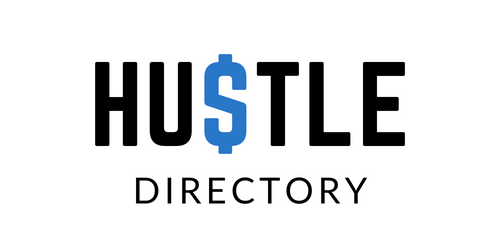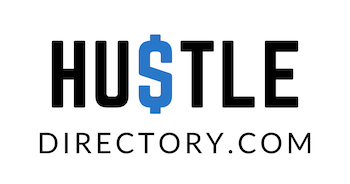So, what is freelancing? It’s the career choice that allows you to take charge of your life, offering unparalleled freedom and flexibility. Imagine working from home, lounging on a beach in Thailand, or sipping coffee at a Starbucks down the street – all while making money. As a freelancer, you’re in charge of setting your rates, working as much or as little as you want, and having way more control over your income compared to the typical 9-to-5 hustle.
In this article, we’re gonna dive deep into the freelancing universe, checking out how it all works, popular gigs, the best platforms, and how to kick things off. By the time you’re done, you’ll grasp how to tap into the potential of freelancing to master your earnings and location, revolutionizing both your career and way of life. Let’s dive in and get you excited about the incredible possibilities that freelancing has to offer!
What Is Freelancing?
So, what is freelancing? Essentially, freelancing means being your own boss, providing specialized services to clients without being bound to just one employer. Freelancers are like one-person businesses, juggling multiple clients and projects while enjoying the flexibility to set their schedules, work remotely, and define their career paths.
For instance, consider Sarah, a talented graphic designer. She decides to become a freelancer, offering her design skills to clients from various industries. She enjoys the freedom to choose projects that interest her and sets her rates based on her expertise and experience. Sarah can opt to freelance full-time or on the side while maintaining a traditional job, depending on her financial goals and personal preferences.
There are three primary types of freelancers:
- Independent contractors: Professionals hired for a specific project or period.
- Consultants: Experts who offer advice and guidance in their area of expertise.
- Self-employed professionals: Individuals who run their own business, providing goods or services.
What sets freelancing apart from regular jobs is the degree of liberty and control freelancers enjoy in their work. You can also choose whether to freelance full-time, or do it on the side of your full-time job. Just beware that some employers aren’t cool with it. This flexibility allows individuals to craft their careers to fit their personal goals and aspirations.
How Freelancing Works
As we’ve explored what is freelancing, it’s essential to understand how it works, including its advantages and disadvantages. Freelancers find and secure projects by marketing their skills and expertise to potential clients. They can choose which projects to take on, set their workload, and often work freelance jobs from home. This level of autonomy allows freelancers to shape their careers based on personal preferences and goals.
What is Freelancing’s Advantages
- Flexibility: Freelancers have the freedom to set their schedules, choose their clients, and decide on their workload. This flexibility allows for better work-life balance and the ability to pursue personal interests.
- Higher earning potential: Since employers don’t have to pay for benefits and taxes, freelancers can often charge higher hourly rates, leading to increased income.
- Diverse projects: Freelancers can work on various projects across different industries, preventing boredom and promoting professional growth.
- Location independence: Location independence is one of the biggest benefits of freelancing. Freelancers can work from anywhere with a reliable internet connection, making it an attractive option for digital nomads and those who prefer remote work.
What is Freelancing’s Disadvantages
- Lack of benefits: As independent contractors, freelancers don’t receive benefits such as health insurance, retirement plans, and paid time off. They need to manage these aspects independently.
- Inconsistent income: Freelancers may experience fluctuating income due to the project-based nature of their work. Financial planning and budgeting become crucial for long-term success.
- Self-employment taxes: Freelancers are on the hook for paying their own taxes, which can be a bit confusing and time-consuming. It’s never fun to hand over your hard-earned money to the tax man, either.
- Client management: Building and maintaining relationships with clients, handling contracts, and managing project expectations are all part of the freelancing process, adding to the overall workload.
Understanding the advantages and disadvantages of freelancing is crucial for anyone considering this career path. By being aware of both the rewards and challenges, you can make an informed decision about whether freelancing is the right choice for you.
Most Common Freelancing Jobs

As you venture into the world of freelancing, you might wonder, “what is freelancing’s most common gigs?”. There are countless opportunities, catering to different skills and passions. Here are ten popular freelancing gigs, each accompanied by a brief description:
- Content writing: Crafting engaging articles, blog posts, and other written content for various industries.
- Copywriting: Writing persuasive marketing and advertising copy to drive sales and conversions.
- Graphic design: Creating visually appealing designs for branding, marketing materials, and digital media.
- Web design: Designing user-friendly, visually attractive websites for businesses and individuals.
- Web development: Building and maintaining websites using coding languages and frameworks.
- Digital marketing consulting: Advising businesses on effective online marketing strategies to boost their online presence.
- SEO consulting: Helping clients optimize their websites for search engines to increase organic traffic.
- Tutoring: Providing academic support and guidance to students in various subjects.
- Teaching languages: Instructing students in learning new languages or improving their language skills.
- Personal training: Designing and implementing fitness programs for clients to achieve their health and fitness goals.
These gigs represent just a fraction of the opportunities available in the freelancing world. There are even freelance jobs for students. Explore our extensive list of freelance business ideas to discover even more options!
How To Start Freelancing
Now that you’ve discovered what is freelancing and its potential benefits, you may be eager to dive into the freelancing world. To help you get started, we’ve created a pretty detailed step-by-step guide that can help you smoothly transition into your first freelancing roles:
- Identify your skills and services: Assess your strengths and determine the services you can offer as a freelancer. Consider your professional background, education, and personal passions. Think about how you can differentiate yourself from competitors by offering unique or specialized services.
- Create a strong online presence: Freelancing is a lot easier if your clients trust you. While you don’t need to do it initially, you should eventually bolster your online presence with a professional website, portfolio, and even social media accounts. Most clients will never meet you in person, so your online image is what actually matters.
- Join freelancing platforms: Sign up for top freelancing platforms like Upwork, Fiverr, and Freelancer to connect with potential clients and apply for projects. Take the time to create compelling profiles that showcase your expertise and past experience.
- Network and find clients: Attend industry events, join online communities, and engage in social media to connect with potential clients and other freelancers in your field. Building relationships within your industry can lead to valuable partnerships and opportunities.
- Ask for referrals: Leverage your existing network by asking friends, family, and past colleagues for referrals or introductions to potential clients. A strong referral can often be the key to securing new projects.
- Set your rates: Research market rates for your services and consider factors like your experience, skills, and project complexity to determine your pricing strategy. Don’t be afraid to negotiate your rates to ensure you’re fairly compensated for your work.
- Develop a contract template: Create a standard contract outlining your terms, conditions, and payment details to protect both you and your clients. Be prepared to customize contracts based on individual client needs and requirements.
- Establish a routine: Develop a daily routine to manage your workload, stay organized, and maintain a healthy work-life balance. Establishing boundaries and setting specific working hours can help prevent burnout and ensure you stay productive.
- Utilize tools and technology: Take advantage of various tools, including AI-based software, to streamline your processes and make your work more efficient. These tools can help with tasks like project management, invoicing, time tracking, and more.
- Continuously market yourself: Regularly update your portfolio, engage with your network, and seek new opportunities to ensure a steady flow of projects. Stay informed about industry trends and invest in professional development to maintain a competitive edge.
By following these steps, you’ll be well on your way to building a successful freelancing career, taking control of your income and location while enjoying the freedom and flexibility that comes with it. Embrace the opportunities and challenges that freelancing presents, and you’ll find yourself thriving in this dynamic career path.
Top Freelancing Platforms
When entering the world of freelancing, you’ll quickly discover that there are numerous platforms available to help you find work and connect with clients. But what is freelancing without the right platform to support your goals? Let’s explore some of the top freelancing platforms, their characteristics, and how they’re structured:
- Fiverr: Fiverr is a popular platform known for its short-term gigs, often referred to as “gigs,” which start at $5. This platform allows freelancers to create service packages tailored to their expertise and price range. Fiverr is ideal for those seeking quick, one-off tasks, and it covers a wide range of industries.
- Upwork: Upwork is one of the largest freelancing platforms, catering to both short-term and long-term projects. Freelancers can create detailed profiles showcasing their skills, experience, and hourly rates. Upwork uses a bidding system, where freelancers submit proposals for posted jobs. This platform is suitable for those seeking ongoing work or larger-scale projects.
- Freelancer: Freelancer is another major platform that connects freelancers with clients in various industries. Similar to Upwork, freelancers can bid on projects and showcase their expertise through their profiles. Freelancer offers both fixed-price and hourly projects, providing a range of opportunities for different skillsets and preferences.
- Freelancer Club: Freelancer Club is a membership-based platform specifically designed for creative professionals, including photographers, designers, and writers. This platform offers job listings, networking opportunities, and resources to help freelancers grow their businesses. Freelancer Club focuses on fostering a supportive community for creative freelancers.
Every platform boasts distinct features and setups, making it crucial to try out different ones and pick the one that meshes best with your freelancing aspirations. By leveraging these platforms, you can connect with clients and secure projects that align with your skills, interests, and desired income levels. And, if you’re looking for more freelancing websites, check out our Platforms Directory.
Getting Paid as a Freelancer
A crucial aspect of freelancing is understanding how payments work and ensuring you receive timely compensation for your services. You may wonder, what is freelancing’s payment system? While each freelancing platform may have its payment system, there are also various tools and methods available to help you manage payments efficiently.
- Platform-based payments: The majority of freelancing platforms, such as Upwork and Fiverr, come with integrated payment systems that manage the transactions between clients and freelancers. These systems often require clients to fund projects upfront, ensuring that freelancers receive payment upon completing the work. Keep in mind that platforms usually charge a fee for processing payments.
- Payment processing tools: When working solo or beyond a freelancing platform, you can rely on payment processing tools, such as Stripe and PayPal, to receive payments from clients. These tools enable you to receive payments in various currencies and offer secure transaction processing.
- Invoicing and accounting tools: To manage your finances effectively, consider using invoicing and accounting tools like Freshbooks and Quickbooks. These tools can help you create professional invoices, track expenses, and monitor your income. Additionally, they can simplify tax preparation by providing financial reports and keeping track of deductible expenses.
- Setting payment terms: It’s essential to establish clear payment terms with your clients, including payment methods, due dates, and late payment fees. Include these terms in your contract to ensure both parties understand and agree to the payment conditions.
- Milestones and deposits: For larger projects, consider breaking the work into milestones and requiring partial payments upon completing each milestone. This approach ensures you receive payment throughout the project and reduces the risk of non-payment. Alternatively, you can request an upfront deposit before starting a project, providing financial security and commitment from the client.
Understanding how to get paid as a freelancer and leveraging various tools can help you manage your finances effectively, ensuring timely compensation for your hard work. By being proactive and staying organized, you can enjoy the financial perks of freelancing while minimizing the risk of payment issues.
Tips for Success in Freelancing

Embarking on a freelancing journey can be both exciting and challenging. To flourish in this ever-changing career, we’ve gathered some tips to ensure your success:
- Prioritize effective communication: Open and prompt communication with clients is vital for fostering trust and nurturing strong work relationships. Keep clients updated on project progress, ask for clarifications when needed, and respond promptly to inquiries.
- Set realistic goals and expectations: Establish attainable objectives and communicate your capabilities and limitations to clients. This approach helps avoid misunderstandings and ensures you deliver high-quality work on time.
- Hone your time management skills: Develop a daily routine and use time management techniques, like the Pomodoro Technique or time blocking, to stay organized and productive. Managing your time efficiently will help you meet deadlines and maintain a healthy work-life balance.
- Invest in your professional development: Stay up-to-date with industry trends, attend workshops, and expand your skillset through online courses or certifications. Continuously improving your skills will make you more competitive and valuable to clients.
- Diversify your client base: Avoid relying on a single client or project for your income. Building a diverse client portfolio can help you maintain a steady workflow and reduce financial risks associated with client turnover or project cancellations.
- Remove bottlenecks with AI tools and outsourcing: Utilize AI-based tools and consider outsourcing tasks to streamline your processes, increase efficiency, and focus on your core expertise. By delegating or automating repetitive tasks, you can spend more time on high-value work and grow your freelancing business.
- Network and collaborate: Connect with other freelancers, attend industry events, and join online communities to expand your network. Building relationships with peers can lead to valuable collaborations, partnerships, and referrals.
- Maintain a professional image: Present yourself professionally in your online presence, client interactions, and project deliverables. A polished and professional image can help you attract more clients and command higher rates.
- Track your finances and pay taxes: Monitor your income, expenses, and tax obligations to ensure you’re financially prepared and compliant with tax regulations. Seek professional advice from an accountant or tax consultant if needed.
By adhering to these guidelines, you can establish a robust foundation for a flourishing freelance career, gaining command over your earnings, location, and timetable while relishing the autonomy and adaptability that accompanies it.
Wrapping Up
In conclusion, freelancing offers an incredible opportunity for individuals looking to take control of their income, location, and schedule. With the creator economy in full swing, there has never been a better time to become a freelancer and capitalize on the diverse opportunities available.
Also, our website is dedicated to helping you explore and navigate the world of freelancing and online income generation — so definitely check it out! We encourage you to visit our Hustle Directory for a wide range of freelancing ideas and our Platform Directory to discover the best platforms to showcase your skills and find clients.
Happy hustling!










